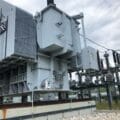Every manufacturer in the electronics industry knows the problems that component obsolescence can cause. Designers too – because even before production begins, the issue of components becoming obsolete can occur all too regularly during the original design process.
This can not only delay production and, therefore, extend time-to-market for the most innovative electronic devices, but it can also mean additional costs for the manufacturer in a market where margins are tight and competitiveness is the key to repeat orders and continued success.
There are various ways to address obsolescence. The best way to minimise the impact of components rapidly becoming outdated is through a process called ‘obsolescence management’. The key question is: how can that goal be achieved when the electronics market is such a rapidly changing environment, with new parts being introduced then becoming obsolete within very short timeframes?
It is important to remember that obsolescence will affect all components eventually but some will have a far longer life than others. Therefore, obsolescence management is concerned with managing that delicate balance between wanting to incorporate state-of-the-art features into a product while at the same time ensuring those seemingly cutting-edge components have a lengthy operational life and can also be supported by their supplier for as long as possible.
Sourcing is key
One of the most important factors when looking to minimise obsolescence issues is components sourcing. When considering using a particular part, it makes good sense to check on the availability of any other product – which must be industry-standard – that is almost exactly the same as the first-choice component, just in case a replacement is required. Where possible, choosing components that are designed and manufactured for use in the automotive industry can also minimise obsolescence because demand in this sector tends to lead to components being made in much greater volumes and, therefore, having a longer operational life than others.
Equally, it makes sense for designers not to tie themselves too closely to a specific component supplier. Having the widest options possible in terms of sourcing means that flexibility is built-in from the very beginning. Of course, this process can be made substantially simpler by having a single point of access from which to compare the products that are available from the broadest possible range of suppliers. When it comes to minimising obsolescence, it has never been more important to source components from reputable distributors.
A useful tool
Finding and comparing electronic components needs to be as straightforward as possible, which is why OEMSecrets – the comparison website for the electronics industry (www.oemsecrets.com) – has proved to be a useful tool for increasing numbers of designers and manufacturers in the sector. The site enables users to search by manufacturers’ part numbers to compare pricing and inventory from more than 100 electronics component distributors. With just a few clicks, customers can enter a quantity to find the best product match and then buy the components they want directly from distributors.
Sam Cowley, founder and managing director of OEMSecrets, says: “When going through the designing process, making sure you choose the right electronics component for your product can be an extremely tricky process. Of course, you want to source components at the best price but at the same time you want to limit the chances of them becoming obsolete within a short time period – and certainly not while you’re still going through the design process.”
“Everybody wants to keep costs down while offering the shortest achievable time-to-market for their products” continues Sam. “And obsolescence management can make sure these twin goals are met wherever possible. We are committed to ensuring visitors to our site have access to all the data they need to make the kind of informed choices that will keep them ahead of their competitors. This will empower engineers to design and manufacture some of the most advanced products in the world, featuring the very best components whilst offering the longest possible shelf life too.”








